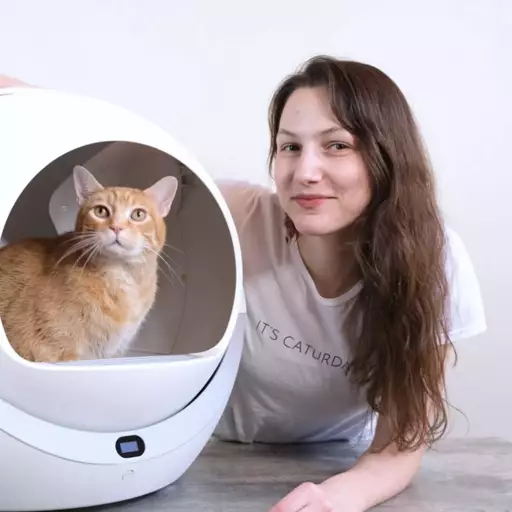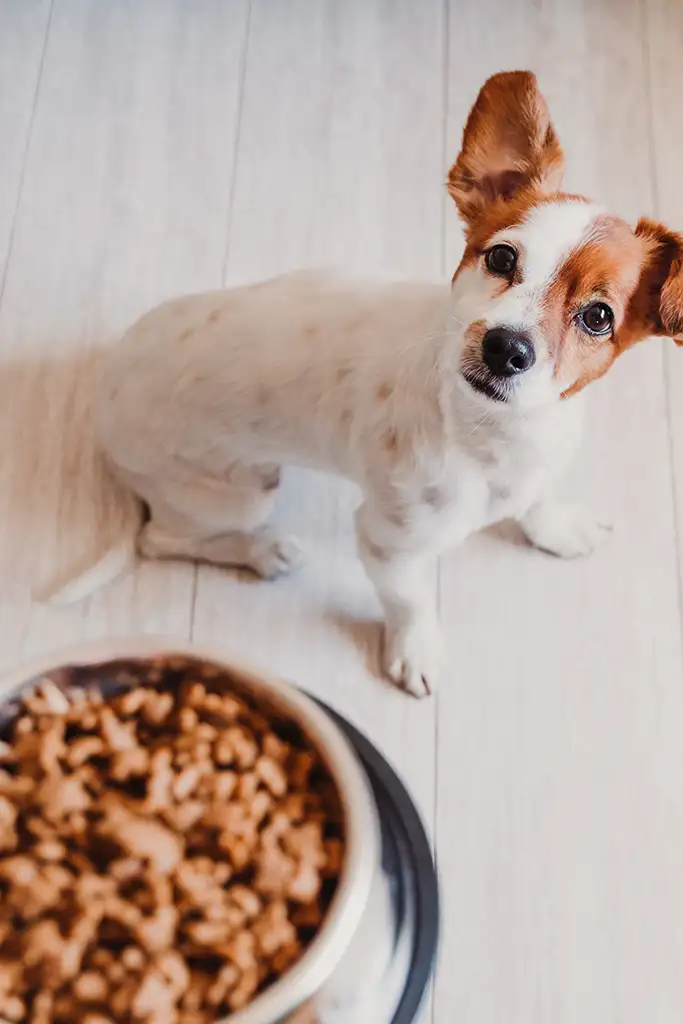10 Best Cat Foods (Wet & Canned) for Pancreatitis in 2024
Quick Guide
- What is the Best Cat Food for Pancreatitis?
- What Do You Need to Know About Pancreatitis in Cats?
- How is Pancreatitis in Cats Treated?
- What to Look for in a Cat Food for Pancreatitis
- The 10 Best Cat Foods for Pancreatitis : 2024 Picks
- Smalls Ground Bird Fresh Cat Food Delivery
- American Journey Minced Salmon & Tuna Recipe in Gravy Grain-Free Canned Cat Food
- Taste of the Wild Canyon River Grain-Free Canned Cat Food
- I and Love and You Purrky Turkey Pate Grain-Free Canned Cat Food
- Nature’s Variety Instinct Raw Boost Grain-Free Chicken Recipe Dry Cat Food
- ZiwiPeak Lamb Recipe Canned Food
- 4 More Top-Rated Cat Foods for Pancreatitis
- Frequently Asked Questions
- Pancreatitis Cat Food – RECAP
If your cat is overweight, diabetic, or getting up in years, he may be at a higher risk for certain health problems. One of those problems is pancreatitis.
Pancreatitis is simply the name given to inflammation of the pancreas and, while it may not sound like a big deal, it can have a significant impact on your cat’s health. If not caught early and treated promptly, pancreatitis can lead to other health problems and potentially deadly complications. It is essential that you learn to identify the signs of pancreatitis so you can protect your cat.
In this article, we’ll cover the subject of pancreatitis in cats in detail, including the causes and symptoms. We’ll review options for treating pancreatitis in cats naturally through diet and provide recommendations for choosing a cat pancreatitis diet. You’ll also see our top picks for the best cat food for pancreatitis.
What is the Best Cat Food for Pancreatitis?
- Smalls Human-Grade Ground Bird Fresh Food Delivery – Healthiest
- American Journey Minced Salmon & Tuna Recipe – Most Affordable
- Taste of the Wild Canyon River Grain-Free Canned – Most Popular
- I and Love and You Purrky Turkey Pate Grain-Free
- Nature’s Variety Instinct Raw Boost Grain-Free
- Merrick Purrfect Bistro Grain-Free Rabbit Pate
What Do You Need to Know About Pancreatitis in Cats?
The pancreas is an essential organ in your cat’s body that serves two functions: to produce insulin and create digestive enzymes. Insulin is a hormone that helps regulate your cat’s blood sugar levels by enabling cells to absorb glucose from the bloodstream. Digestive enzymes help break down food.
When your cat’s pancreas becomes injured or overworked, it is prone to inflammation that, over time, may negatively impact the organ’s function. Inflammation in the pancreas is known as pancreatitis.
Though pancreatitis is most common in cats over the age of 10, it is becoming an increasingly common health problem. One possible explanation is the fact that most cats are being fed a commercial cat food made with high levels of carbohydrates. The average kibble contains anywhere from 35% to 80% carbohydrates – carbohydrates that can cause your cat’s insulin levels to spike, putting more stress on his pancreas, and interfering with his digestion.
Here are some other key facts you should know about feline pancreatitis:
- A diet too high in carbs or fat is likely to overtax the pancreas, leading to problems with inflammation that can then contribute to other health problems related to poor pancreas function.
- The most common symptoms of pancreatitis in felines are lethargy and loss of appetite, but others include vomiting, fever, abdominal pain, weight loss, dehydration, fatigue, and depression.
- There are several potential causes for pancreatitis including inflammatory bowel disease (IBD), liver disease, diabetes, certain infections, abdominal trauma, and poisoning.
- Cats that are overweight, obese, or fed a high-fat diet have a higher risk for developing pancreatitis as well as other health problems.
- Prompt treatment is important for pancreatitis to avoid progression of the inflammation – once the problem is resolved, however, the cat may still experience recurrences.
- Improving the quality and digestibility of your cat’s diet, along with the addition of digestive enzymes, can reduce stress on the pancreas and reduce the chance of recurrence.
Another important thing to know about feline pancreatitis is that it is different from canine pancreatitis. In dogs, pancreatitis is closely linked to the consumption of dietary fats and treatment of the disease necessitates a low-fat diet. In cats, however, there does not seem to be a link between fats and pancreatitis. It is more important to feed your cat a high-protein, moderate-fat, highly digestible diet.
When it comes to treating pancreatitis in cats, diet is important, but there are other options as well. Keep reading to learn how pancreatitis is treated in cats.
How is Pancreatitis in Cats Treated?
Acute pancreatitis is a serious problem that requires prompt treatment. At the first sign of symptoms, you should take your cat to the vet. Unfortunately, some symptoms like loss of appetite and lethargy may not be immediately apparent, but if your cat develops recurrent episodes of vomiting or stops drinking water, you should be concerned.
The diagnosis of pancreatitis in cats usually starts with a physical exam and blood workup. If your cat’s bloodwork reveals an elevated white cell count, it is indicative of a problem but does not necessarily mean that pancreatitis is that problem. If your cat’s bloodwork reveals elevated pancreatic enzymes in the blood, however, that would confirm the diagnosis. Unfortunately, many cats with pancreatitis have normal pancreatic enzymes levels which makes diagnosis tricky.
If bloodwork isn’t enough to diagnose your cat’s pancreatitis, your veterinarian may take x-rays to check for inflammation around the pancreas. Ultrasound may also be used for this purpose. Once the diagnosis is made, the following treatment options are available:
- Cessation of oral fluids and food. The only way to stop the pancreas from overworking to secrete digestive enzymes is to stop giving the cat food and water. You will, of course, have to administer intravenous food and fluids to keep the cat healthy.
- Anti-inflammatory medications and analgesics. Many cases of pancreatitis require treatment with anti-inflammatory medications and some cats need analgesics to control pain.
- Dietary changes. If your cat has inflammatory bowel disease or other issues triggering the pancreatitis, dietary changes may be required to resolve the condition and relieve symptoms.
- Further treatment for underlying conditions. There are several health problems which can trigger pancreatitis (like liver disease and diabetes), so treatment of these underlying conditions may be a core component of treatment for your cat’s pancreatitis.
What to Look for in a Cat Food for Pancreatitis
With prompt treatment, your cat may be able to recover completely from pancreatitis. Even then, however, he is still susceptible to reoccurrence, so it is a good idea to manage the condition with dietary changes. You’ll need to find a cat food that is easy to digest which means high-quality ingredients including animal protein, healthy fats, and limited carbohydrate content. Experts agree that raw food is best for cats with pancreatitis, but that is not always affordable or practical for all pet owners.
If you choose to feed your cat commercial cat food, there are certain points you need to hit. Here are the key qualities to look for in cat food for pancreatitis:
- Easy to digest. Digestibility is key when it comes to feeding a cat with pancreatitis. Wholesome, natural ingredients are the easiest to digest, as are animal products versus plant products.
- Premium animal protein. High-quality animal protein is the foundation of any healthy diet for cats. Look for a recipe made with a single source of animal protein, if possible, or at least a combination that your cat’s body doesn’t have trouble digesting.
- Moderate fat levels. Unlike dogs, cats do not require a low-fat diet to treat or manage pancreatitis, but you shouldn’t choose a high-fat diet either. Look for a cat food with moderate fat content that comes from high-quality sources, ideally animal-based.
- Limited carbohydrate content. Your cat’s body was not designed to digest carbohydrates, so a cat food that contains too many plant products will be difficult to digest. You also need to remember that carbohydrates break down into glucose, so too many carbs in your cat’s diet may trigger the pancreas to start over-producing insulin, causing further stress and damage.
- Rich in moisture. Dehydration is a common symptom of pancreatitis, and hydrating is key to recovery. Look for a cat food rich in moisture and make sure your cat drinks plenty of water too.
- Beneficial supplements. In addition to vitamin and mineral supplements included for nutritional balance, look for a recipe that contains supplements to boost your cat’s digestion. Prebiotic fibers and probiotic supplements are great, as are digestive enzymes.
Every cat is unique, so you’ll need to cater your choice to your cat’s individual needs. Keeping in mind the importance of digestibility, moisture, and high-quality protein, there are many options available to you in commercial cat food. Keep reading to see our top 10 picks.
The 10 Best Cat Foods for Pancreatitis : 2024 Picks
One of the most important considerations for a diet in cats with pancreatitis is moisture. For this reason, we’ve selected a collection of wet foods for our recommendations. In addition to being rich in moisture, a cat food for pancreatitis should be made with high-quality ingredients including animal proteins, moderate levels of healthy fats, and digestible carbohydrates. Here are our top picks for the best cat food for pancreatitis:
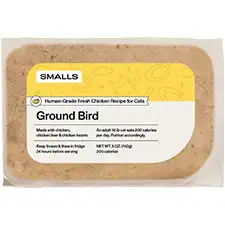 | Smalls Fresh Food Delivery
| CHECK PRICE |
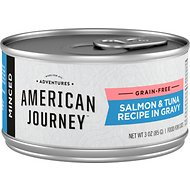 | American Journey Minced Salmon & Tuna Recipe
| CHECK PRICE |
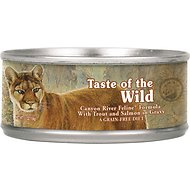 | Taste Of The Wild Canyon River Grain-Free Canned
| CHECK PRICE |
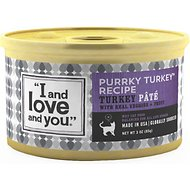 | I And Love And You Purrky Turkey Pate
| CHECK PRICE |
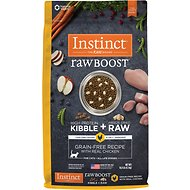 | Nature’s Variety Instinct Raw Boost Grain-Free
| CHECK PRICE |
 | ZiwiPeak Lamb Recipe Canned Food
| CHECK PRICE |
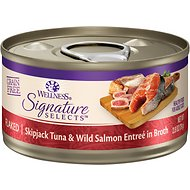 | Wellness CORE Signature Selects Flaked Skipjack Tuna
| CHECK PRICE |
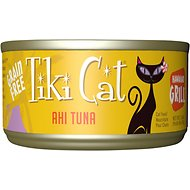 | Tiki Cat Hawaiian Grill Ahi Tuna Grain-Free Canned
| CHECK PRICE |
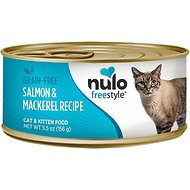 | Nulo Freestyle Salmon & Mackerel Recipe
| CHECK PRICE |
 | Merrick Purrfect Bistro Grain-Free Rabbit Pate
| CHECK PRICE |
Smalls Ground Bird Fresh Cat Food Delivery

When it comes to treating pancreatitis in cats, diet is a major factor. The quality and digestibility of your cat’s diet is key, so fresh food is a great option. Smalls is a fresh pet food delivery service that sends monthly shipments of fresh pet food right to your door.
Choose from four recipes (fish, bird, cow, or other bird) and receive pre-portioned packages of fresh food made with wholesome, natural ingredients. Both recipes start with premium animal protein as the first ingredient with fresh fruits and vegetables to provide nutritional balance. These recipes are high in protein and moisture but low in carbohydrates and moderate in fat and calories. In addition to supporting your cat’s digestion and overall health, Smalls fresh food will also boost his immunity and support healthy skin and coat.
- Pros: Rich in protein and moisture, low in carbohydrates, moderate fat content, pre-portioned for your cat’s needs, monthly deliveries of fresh food, supports healthy digestion and immunity
- Cons: Only two recipes to choose from, expensive to feed as a staple diet
American Journey Minced Salmon & Tuna Recipe in Gravy Grain-Free Canned Cat Food

Our Top Pick for the Best Affordable Cat Food for Pancreatitis: The American Journey brand was created by Chewy to offer pet parents a high-quality option in affordable pet food. This American Journey Minced Salmon & Tuna Recipe in Gravy Grain-Free Cat Food is a good option in a chronic pancreatitis cat diet. Not only is it loaded with animal protein, but it is high in moisture, low in carbohydrates, and moderate in fat. This formula features fresh salmon, tuna, and chicken as the main proteins with chicken liver and egg whites for supplemental protein. It is a grain-free recipe which boosts the digestibility, with the added benefit of supplemental fiber for healthy digestion. This recipe contains chelated minerals which work with the vitamin supplements to ensure nutritional balance and there is a blend of omega-3 and omega-6 fatty acids for healthy skin and coat. Overall, if you’re looking for a protein-rich, affordable wet food made with wholesome ingredients and animal proteins, American Journey offers a wide variety of product choices to consider.
- Pros: High in protein and moisture, moderate fat content, fresh fruits and vegetables, blend of omega-3 and omega-6 fatty acids, chelated minerals, easy to digest
- Cons: Not a single-source protein recipe (some cats are sensitive to chicken)
Taste of the Wild Canyon River Grain-Free Canned Cat Food

Our Top Pick for the Most Popular Cat Food for Pancreatitis: When you can’t decide what to feed your cat, you can always go with a popular brand like Taste of the Wild. Though not specifically designed as a chronic pancreatitis cat diet, this Taste of the Wild Canyon River Grain-Free Canned Cat Food is a good option because it is made with a novel source of animal protein with low carbohydrate content, high moisture content, and moderate fat content. This recipe features fresh trout as the main ingredient with ocean fish, eggs, and smoked salmon for supplemental protein. Sunflower oil provides omega-6 fatty acids to balance the omega-3 content of the fish ingredients, providing your cat with plenty of essential fats for healthy skin and coat. This formula contains fresh fruits and vegetables which provide natural sources of key nutrients, working together with vitamin supplements and chelated minerals to ensure nutritional balance.
- Pros: Plenty of premium animal protein, high in moisture, moderate fat content, fresh fruits and vegetables, digestible grain-free carbohydrates, chelated minerals
- Cons: Not a single-source protein recipe
I and Love and You Purrky Turkey Pate Grain-Free Canned Cat Food

Our Top Pick for the Best Grain-Free Cat Food for Pancreatitis: Though grain allergies are fairly uncommon, many cats have trouble digesting grains and other carbohydrates. A highly digestible diet low in carbohydrates is essential for cats with pancreatitis, which is why we recommend this I and Love and You Purrky Turkey Pate Grain-Free Canned Cat Food. This wet food features real turkey as the first ingredient for a protein-rich recipe that is highly digestible. This cat food is made from fresh, high-quality ingredients without the use of artificial additives, fillers, or by-products. It is made with digestible grain-free carbohydrates like cranberries, spinach, and carrots as well as other fruits and vegetables which provide natural sources for key vitamins and minerals. This recipe is supplemented with fiber for healthy digestion and contains chelated minerals which are minerals that have been bound to protein molecules to increase absorption. Overall, this recipe provides plenty of protein with moderate fat content and an abundance of natural flavor.
- Pros: Real turkey as first ingredient, high in protein moderate in fat, digestible grain-free carbohydrates, fresh fruits and vegetables, rich in fiber, chelated minerals, easy to digest
- Cons: Somewhat expensive to feed as a staple diet, no probiotic supplements
Nature’s Variety Instinct Raw Boost Grain-Free Chicken Recipe Dry Cat Food

Our Top Pick for the Best Dry Cat Food for Pancreatitis: If you prefer to feed your cat dry food but still want him to enjoy the benefits of a high-protein, low-carb diet, we recommend this Nature’s Variety Instinct Raw Boost Grain-Free Chicken Recipe Dry Cat Food. This formula features real chicken as the main ingredient in a high-protein kibble mixed with freeze-dried raw pieces for a boost of nutrition and flavor. It contains limited amounts of grain-free carbohydrates including peas and tapioca with added fiber and probiotics for healthy digestion. This recipe contains a somewhat limited number of ingredients outside of beneficial supplements, including fresh fruits and vegetables that act as natural sources for key nutrients. Overall, this recipe is high in protein and made with wholesome, natural ingredients to ensure digestibility.
- Pros: High-protein kibble with freeze-dried raw pieces, real chicken as main ingredient, limited carbohydrate content, prebiotic fibers and probiotics, fresh fruits and vegetables, chelated minerals
- Cons: Some cats are sensitive to chicken ingredients, expensive to feed as a staple diet
ZiwiPeak Lamb Recipe Canned Food

Our Top Pick for the Best Cat Food for Sensitive Stomach and Pancreatitis: For cats that have food allergies or sensitivities, finding the right diet for pancreatitis can be tough. We love this ZiwiPeak Lamb Recipe Canned Food because it features real lamb as a single source of novel protein, making it easy to digest and full of natural flavor. This recipe contains very little carbohydrate content, largely in the form of grain-free ingredients like chickpeas and dried kelp. It is supplemented with chelated minerals for optimal nutrient absorption with vitamin supplements for nutritional balance. You’ll also be glad to know that this formula contains a limited number of main ingredients to further reduce the risk for triggering food allergies. It is rich in protein with moderate fat content and plenty of moisture to boost your cat’s digestion.
- Pros: Rich in protein and moisture, real lamb as the main ingredient, limited number of ingredients, chelated minerals to improve absorption, complete and balanced, plenty of natural flavor
- Cons: Expensive to feed as a staple diet, no probiotic supplements
4 More Top-Rated Cat Foods for Pancreatitis
If the cat foods reviewed above don’t seem like the right fit for your cat with pancreatitis, there are many other options to choose from. Here are four more options that we’ve assembled which could be a good fit for a cat pancreatitis diet:
Wellness CORE Signature Selects Flaked Skipjack Tuna & Wild Salmon Entrée Canned Food

If your cat has trouble digesting grains, this Wellness CORE Signature Selects Flaked Skipjack Tuna & Wild Salmon Entrée Canned Food could be a good option. Not only is it free from grains and low in carbohydrate ingredients, but it is packed with premium animal proteins with fiber and moisture for healthy digestion. This recipe features fresh tuna, mackerel, and salmon in a trio of premium animal proteins which also provide natural sources for essential fatty acids. The formula contains tapioca starch to provide fiber, though there are no other carbohydrate ingredients. You’ll find vitamins and chelated mineral supplements included as well to help ensure complete and balanced nutrition.
- Pros: Grain-free recipe, rich in novel animal proteins, high moisture, low in carbohydrates, chelated minerals and vitamins for nutritional balance, rich in flavor
- Cons: No probiotic supplements, somewhat expensive to feed as a staple diet
Tiki Cat Hawaiian Grill Ahi Tuna Grain-Free Canned Cat Food

Many cats with pancreatitis respond well to single-source protein recipes that are low in carbohydrates with low-to-moderate fat content. This Tiki Cat Hawaiian Grill Ahi Tuna Grain-Free Canned Cat Food is a great option because it features wild-caught ahi tuna as the main ingredient and only source of (novel) protein. This recipe contains no grains or carbohydrate ingredients, so it shouldn’t tax your cat’s pancreas. It is rich in omega-3 and omega-6 fatty acids to support skin and coat health, plus rich in moisture for hydration and healthy digestion. This recipe contains vitamin and mineral supplements to ensure complete and balanced nutrition but is free from artificial additives including fillers, flavors, dyes, and preservatives. Plus, it is rich in real fish flavor your cat will love.
- Pros: Single source animal protein, no carbohydrate ingredients, high in protein and moisture, low-to-moderate fat content, complete and balanced nutrition
- Cons: Doesn’t contain added fiber or probiotics
Nulo Freestyle Salmon & Mackerel Recipe Grain-Free Canned Food

Managing pancreatitis can be a lifelong battle, so it might not be a bad idea to feed your kitten a wet food that is also formulated for adult cats, so you never have to switch. We like this Nulo Freestyle Salmon & Mackerel Recipe Grain-Free Canned Food as an option for pancreatitis because it is loaded with premium animal protein from novel sources and is highly digestible. It contains no grains, relying instead on fresh fruits and vegetables to provide fiber as well as natural sources for key nutrients. These nutrients are balanced with vitamin and chelated minerals supplements to ensure complete and balanced nutrition for both kittens and adult cats. Overall, this recipe is a highly digestible source of protein-rich, limited-carbohydrate, and moderate-fat nutrition and natural flavor.
- Pros: Highly digestible, rich in protein and moisture, moderate fat, limited carbohydrate content, grain-free carbohydrates, blend of omega fatty acids, chelated minerals, plenty of fiber
- Cons: Not a single-source protein recipe, no probiotic supplements
Merrick Purrfect Bistro Grain-Free Rabbit Pate Canned Food

If you’re looking for a high-quality wet cat food made with a novel source of protein, try this Merrick Purrfect Bistro Grain-Free Rabbit Pate Canned Food. This recipe features real, protein-rich rabbit as the main ingredient to deliver a powerful punch of protein and flavor. This recipe also contains chicken and chicken liver for supplemental protein as well as a healthy blend of grain-free carbohydrates to ensure digestibility. This recipe is made with dried cranberries and flaxseed to provide plenty of fiber for healthy digestion as well as nutritional support to balance out the vitamin and chelated mineral supplements. It contains a moderate level of fat with high moisture, and it comes in several other flavors if your cat happens to be sensitive to chicken.
- Pros: Real rabbit as first ingredient, wholesome, high-quality ingredients, limited carbohydrate and fat content, chelated minerals, blend of omega fatty acids for healthy skin and coat
- Cons: Contains chicken ingredients (some cats may be sensitive), could be higher in protein
Frequently Asked Questions
Can a cat recover from pancreatitis?
The key to treating pancreatitis in cats is to catch it as early as possible. With early detection and prompt treatment, mild cases of pancreatitis often resolve with no further complications. Even if your cat has a moderate to severe case of pancreatitis, he may still recover but is likely to have recurrences throughout his life. The likelihood of a full recovery is low for cats with concurrent conditions like diabetes, liver problems, and small intestine disease.
How can I treat my cat’s pancreatitis at home?
When it comes to treating pancreatitis in cats naturally, a healthy diet is essential. Your cat should be fed a high-protein, low-carbohydrate, moderate-fat diet made from high-quality, natural ingredients with high moisture levels. In addition to a healthy diet, your cat needs regular exercise, and he may also benefit from the addition of digestive enzyme supplements at meals to boost his digestion and nutrient uptake. Probiotic supplements can also improve your cat’s digestion.
What are the symptoms of feline pancreatitis?
Pancreatitis may produce a wide variety of symptoms including fever, loss of appetite, weight loss, fatigue, sluggishness, depression, rapid heart rate, and difficulty breathing. The symptoms your cat develops may depend, in part, on the underlying cause for his pancreatitis. Again, pancreatitis can be the result of inflammatory bowel or liver disease, diabetes, certain types of infections, abdominal trauma, and exposure to certain toxins like insecticides.
Can cats die from pancreatitis?
To remind you, pancreatitis is simply the name given to inflammation of the pancreas and that inflammation can be caused by a variety of different things. A severe and sudden attack of pancreatitis could very well kill your cat, or he may recover completely and never experience the problem again. Because this condition is so variable, it is important to seek veterinary care as soon as possible. Long-term, untreated pancreatitis can lead to severe organ damage, even brain damage, and death.
How long does it take for a cat to recover from pancreatitis?
Once your cat develops inflammation in the pancreas, it can progress quickly. It should also be noted that once your cat develops pancreatitis, he may lose interest in drinking water or eating which can cause his condition to deteriorate even further. Unfortunately, no treatment exists for acute pancreatitis – the treatment depends on the severity of the condition as well as the causative factor. In most cases, acute pancreatitis requires a hospital stay of 2 to 4 days as well as a long course of supportive nutrition and pain management treatment. The length of time it takes a cat to recover from pancreatitis depends on the severity of the condition, how quickly it is diagnosed, and how well the cat responds to treatment.
Pancreatitis Cat Food – RECAP
Watching your cat fall sick is never easy, but it’s important that you step up to the plate and seek prompt treatment at the first sign of trouble. Pancreatitis may not seem like a serious condition, but it can cause devastating effects to your cat’s long-term health if left untreated. If your cat stops eating or drinking and becomes lethargic, don’t delay in talking to your veterinarian.
Making healthy changes to your cat’s diet is one of the best ways to manage pancreatitis and to prevent a recurrence. The quality and digestibility of your cat’s food is of the utmost importance, so take your time when shopping around. If you’re not sure where to look, you can’t go wrong with one of our top-rated picks for the best cat food for pancreatitis reviewed above.





